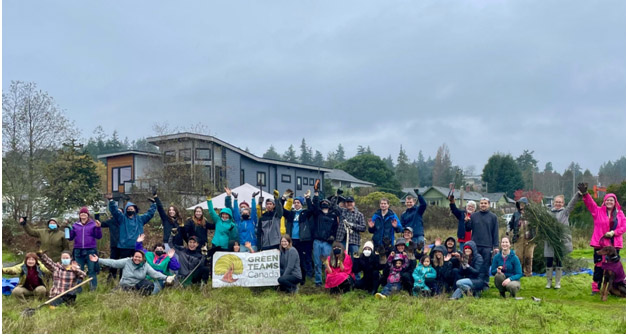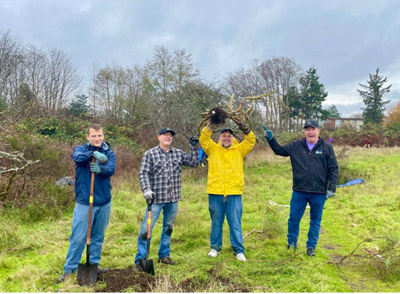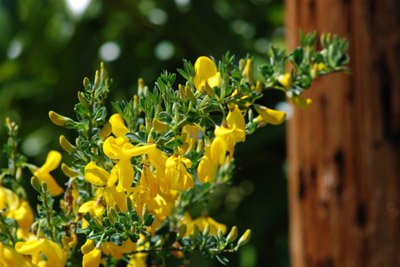
Sunday November 28, 2021 | COLWOOD, BC
by Mary P Brooke, Editor | Island Social Trends
It was billed as a ‘rain or shine’ event, and so it was …. dark skies and rain yesterday, pretty much throughout the 3-hour cleanup of invasive species at Pithouse Park along the Lagoon in Colwood.
Hosted by the City of Colwood and organized by the Greater Victoria Green Team (including volunteer pre-registration), the outdoor activity was for removal of invasive plant species like Himalayan Blackberry and Scotch Broom.
The November 27 invasive species get-together of the neighbourhood’s environmentally-minded of course offered great ocean views and there was a coffee break with donuts with Colwood Mayor Rob Martin.
The targeted species:
Locals on Vancouver Island know blackberry bushes for their popular delicious berries and broom plants for their bright yellow flowers in summer.
These descriptions are provided by the Invasive Species Council of BC:
- Himalayan Blackberry is valued by humans for its delicious berries; however, it easily invades disturbed sites, pastures, roadsides, streambanks, and forest edges. the plant crowds out low-growing vegetation and can create thickets so dense that it limits the movement of large animals. Thickets can produce 7,000 to 13,000 seeds/sq metre. Himalayan blackberry spreads by roots and stem fragments, as well as by birds and animals that eat the berries and disperse them.
- Scotch Broom was introduced from the Mediterranean and is called an escaped garden plant in Canada. It easily invades sunny, disturbed sites such as range lands, roadsides, and areas of recent logging. Scotch broom can increase the intensity of wildfires, obstruct sight lines along roads, and crowd out native plants that animals depend on. A mature plant can live up to 25 years and produce seeds that can survive in the soil for 30 years.
The park that was cleaned up:
Pithouse Park sits along the Lagoon in Colwood.
Volunteers met at the park entrance near 175 Goldfinch Road.
Instructions were clear for the 9:45 am arrival: “Keep left when you get to the end of Goldfinch Road, and park in the parking lot of the Two Waters building at the end of the road.”
Volunteers were encouraged to enjoy the park and take a walk afterward.
Thanks from Mayor Martin:
The Mayor thanked volunteers and spoke about the importance of individuals taking action to protect sensitive environments like Pithouse Park along Esquimalt Lagoon.
He shared that one of the themes of this past week’s Rising Economy Week hosted by the South Island Prosperity Project, was how connected the health of the physical environment is to the well-being of the economy and how local leaders like the Green Team volunteers will inspire others to take positive action.
That’s how change occurs, he concluded.

Climate impacts at the forefront:
Of course, recent climate events have brought the message home about the importance of addressing the needs of the environment as interfaces with human communities.
That would include the summer wildfires of recent years in BC, this past summer’s heat dome event (in which over 560 people died from lack of cooling or ventilation), and current flooding (both in the Fraser Valley farmland area, and also on Vancouver Island) that has had devastating short-term and longer-term impact on communities, transportation routes and supply chains throughout many areas of the province.
The climate change naturally over time, but human activity is seen as a big contributing factor to the extremes that are now being seen.
Part of climate adaptation is about assessing and rethinking the location of homes and community infrastructure, as relates to local and regional natural ecological systems.
===== LINKS:






